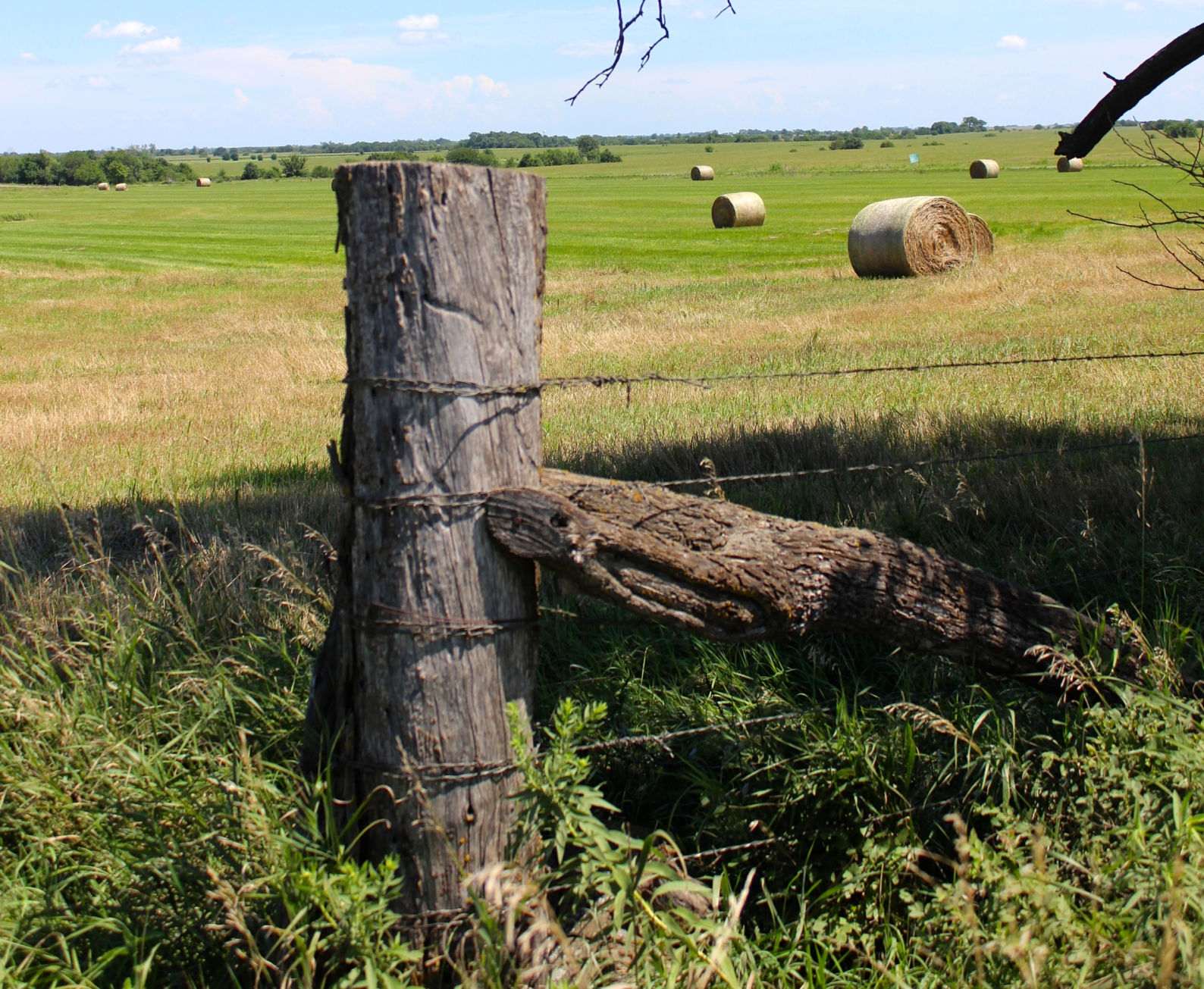Hundreds of miles of fence have been repaired and replaced in Kansas over the last two years thanks to wildfires in 2016 and 2017. Kansas state fence laws have evolved over the years as agriculture has changed across the state.
Here are 10 things to know before setting the next fence post.
1. Kansas is a fence in and a fence out state. Kansas was originally a free-range state but as cattle drives stopped and homesteading began it became a fence out state. Farmers put up fences to keep livestock out of their crops. Then specific laws were passed that required landowners to fence in bulls and hogs and Kansas became a fence in state.
2. A legal fence in Kansas must have no fewer than three wires. The third wire must be not less than 44 inches or more than 48 inches from ground. The bottom wire must not be more than 24 inches nor less than 18 inches from the ground.
3. An electric fence must be at least one 14-gauge wire or its equivalent and the wire must not be more than 48 inches from the ground. County commissioners can set stricter requirements for what constitutes a legal fence so check with your local county commissioners before you build a fence.
4. The right hand rule is not part of Kansas state fence law. What the law actually says is adjacent land owners must keep up and maintain all partition fences in good repair and share the cost equally. Tucker Stewart, associate counsel for the Kansas Livestock Association, said during his presentation at the KLA Convention and Trade Show that landowners adopted the right hand rule to make it easier to build and maintain fences.
5. Landowners share the responsibility to maintain boundary or petition fences but individual landowners must maintain fences along roadways.
6. A landowner can go onto his neighbor’s property to repair or replace a fence. It is not considered trespass if the work is done in a reasonable time and in a reasonable manner.
7. Livestock owners can be held responsible for damage caused by their animals. Kansas state statutes provide that it is unlawful for a domestic animal to run at large. Livestock owners must provide reasonable care and take reasonable precautions to confine their livestock. If your livestock do trespass and damage neighboring property that landowner can retain these animals until he/she is paid for property damages.
8. A landowner can trim trees on neighboring property to maintain or repair a partition fence if he/she does not go beyond a reasonable distance under the circumstances. Stewart said the courts have determined that up to 3 feet is a reasonable distance.
9. Kansas state law does provide for settlement of fence disputes by any two county commissioners where the fence is located. County commissioners called in to resolve such disputes are called fence viewers.
10. Finally, to avoid a fence dispute go to your neighbor and come to an agreement on how to allocate the responsibility for repairing, maintaining, or building a partition fence. If you are able to reach such an agreement with your neighbor, Stewart suggests putting it in writing and filing a copy at Register of Deeds office in your respective county.
Doug Rich can be reached at 785-749-5304 or [email protected].




